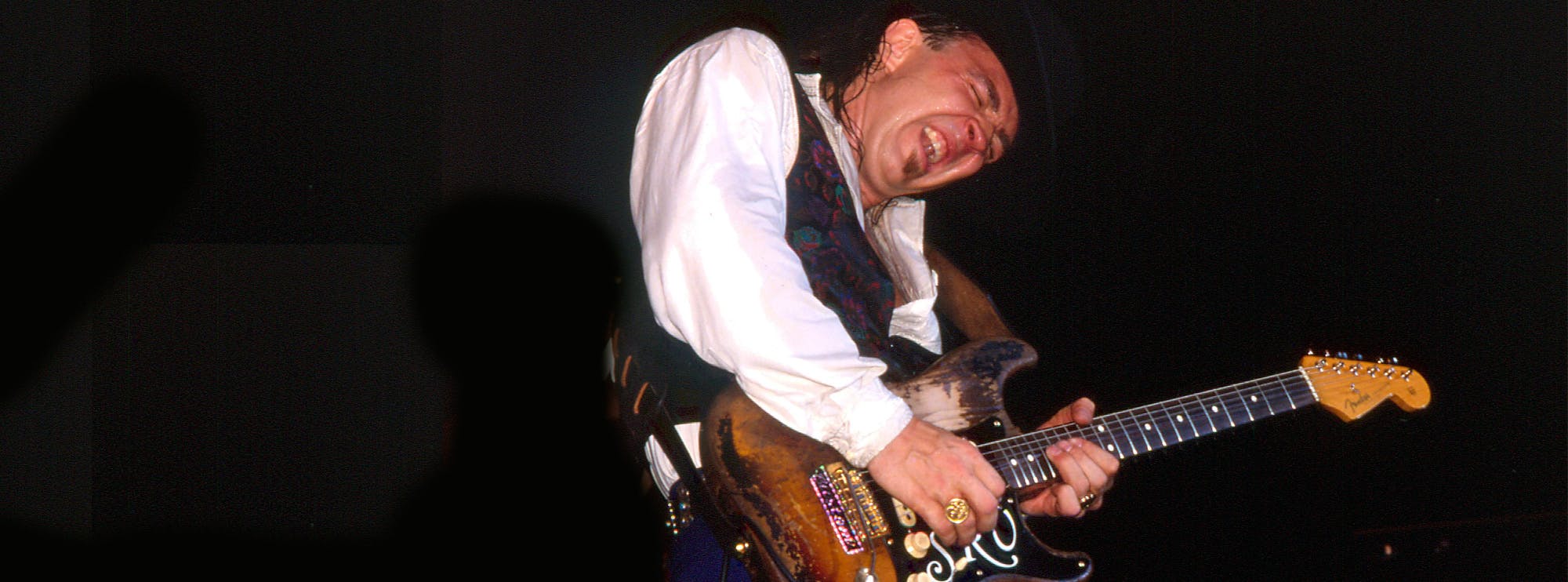"British Steel" by Judas Priest: A Guitarist's Perspective
"British Steel," the sixth studio album by English heavy metal band Judas Priest, was released on April 14, 1980. It marked a turning point in the band's sound, with a more commercial and accessible approach that would shape the future of heavy metal. The album which changed the face of heavy metal as we know it; ‘British Steel’ is the perfect mix of interlocking twin guitar parts, melodic metal anthems and scorching displays of guitar prowess. For guitar enthusiasts, the album offers a masterclass in riffs, solos, and techniques by lead guitarists Glenn Tipton and K.K. Downing.
In this Licklibrary Classic Album guitar lesson course, world renowned tutor Danny Gill guides you through the guitar highlights from this seminal metal album, one timeless riff and unforgettable solo at a time; including fan favourites: ‘Living After Midnight, ‘Rapid Fire and their best-loved metal anthem ‘Breaking The Law’.This in-depth analysis will break down the key elements of each song, focusing on scales, solos, and the guitarists' unique contributions.
1. Breaking the Law
This iconic song opens the album with a simple yet effective power chord riff in E minor. Tipton and Downing's guitars are doubled, with one utilising palm muting and the other playing open, creating a massive sound. The solo uses the E minor pentatonic scale and features string bending, vibrato, and rapid alternate picking techniques.
2. Rapid Fire
This track showcases the guitarists' dexterity with galloping rhythms and syncopated rhythms in A minor. The solo section features double-stop bends, pinched harmonics, and legato playing. The interplay between Tipton and Downing is evident, with one guitarist providing a melodic line while the other plays a more aggressive riff.
3. Metal Gods
"Metal Gods" is a mid-tempo track in E minor that highlights the band's command of atmosphere and dynamics. The main riff employs palm-muted power chords, while the chorus features octave melodies. The solo is played in E Dorian mode and includes slides, pull-offs, and tapped harmonics.
4. Grinder
This driving, aggressive track features an E minor riff with chromaticism and open-string riffs. The chorus incorporates barre chords and palm-muted power chords. The solo is played using the E minor pentatonic scale, with hammer-ons, pre-bends, and double-stops employed to create tension and excitement.
5. United
"United" is an anthemic track in G major that showcases the band's knack for catchy melodies and harmonies. The main riff features power chords and arpeggiated chord progressions, while the chorus utilises dual-guitar harmonies to create a triumphant sound. The solo, played in G major pentatonic, displays Tipton and Downing's mastery of string bending, slides, and sustain.
6. You Don't Have to Be Old to Be Wise
This track features a heavy, groovy riff in A minor with palm-muted power chords and syncopated rhythms. The chorus opens up with melodic, open chords and octave melodies. The solo is played using the A minor pentatonic scale and features hammer-ons, pull-offs, and whammy bar tricks to add flair and excitement.
7. Living After Midnight
One of Judas Priest's most famous tracks, "Living After Midnight" is a catchy, upbeat song in E major. The main riff utilizes power chords and palm muting, while the chorus features open chords and harmonised guitar parts. The solo employs the E major pentatonic scale, with string bending, vibrato, and tremolo picking techniques showcased.
8. The Rage
"The Rage" is a dark, moody track in C# minor that highlights the band's ability to create an ominous atmosphere. The intro features a finger-picking pattern and arpeggios, while the main riff employs power chords and palm muting. The solo showcases Tipton and Downing's command of slides, hammer-ons, pull-offs, and bluesy bends within the C# minor pentatonic scale.
9. Steeler
The closing track of the album, "Steeler," is a fast-paced, aggressive song in A minor. The main riff utilizses power chords, palm muting, and galloping rhythms. The chorus incorporates chord progressions with an ascending melody. The solo section is a showcase of both guitarists' skills, featuring alternate picking, legato, trills, and dive bombs in the A minor scale.
Lead Guitarists: Glenn Tipton and K.K. Downing
Glenn Tipton and K.K. Downing, Judas Priest's lead guitarists, are known for their distinct styles and contributions to the band's sound. Tipton, with his melodic sensibilities and technical prowess, often takes a more structured approach to solos, incorporating alternate picking, sweep picking, and two-handed tapping. Downing, on the other hand, is more aggressive and experimental in his playing, employing pinched harmonics, whammy bar tricks, and rakes to add raw energy to the music.
Their collaborative approach to songwriting and arrangement on "British Steel" highlights their complementary styles, with both guitarists contributing memorable riffs, solos, and harmonies that have become synonymous with Judas Priest's sound.
Guitar Techniques Used in "British Steel"
Throughout "British Steel," Tipton and Downing employ a wide range of guitar techniques that showcase their versatility and skill as musicians. Some of the techniques used include:
- Vibrato
- Alternate Picking
- Legato
- Tapped Harmonics
- Double-Stop Bends
- Unison Bends
- Pinched Harmonics
- Trills
- Tremolo Picking
- [Chord Progressions](https://www.licklibrary.com/glossary/chord-progressions)
- Arpeggios
- Dive Bombs
- Harmonics
- Pull-Offs
- Power Chords
- Palm Muting
- Barre Chords
- Two-Handed Tapping
- Sweep Picking
- Rakes
- Finger-Picking
- Hybrid Picking
- Pre-Bends
- Hammer-Ons
- Double-Stops
- Slides
- Syncopated Rhythms
- Open-String Riffs
- Whammy Bar Tricks
- Bluesy Bends
- Octave Melodies
- Galloping Rhythms
- Dual-Guitar Harmonies
- Arpeggiated Chord Progressions
- Chromaticism
Each of these techniques contributes to the overall sound and impact of the album, making "British Steel" a must-listen for guitarists looking to expand their knowledge and skills. By studying the interplay between Glenn Tipton and K.K. Downing, as well as their individual approaches to songwriting and technique, guitarists can gain valuable insight into the creation of classic heavy metal music.
About The Tutor
Tutor Profile
Danny Gill
Danny Gill is, without a doubt, the most loved tutor by our community. With an incredible array of DVDs and web lessons for LickLibrary covering a wide variety of topics all of which he covers with incredible detail, it's no wonder he carries as much respect as he does. As...



